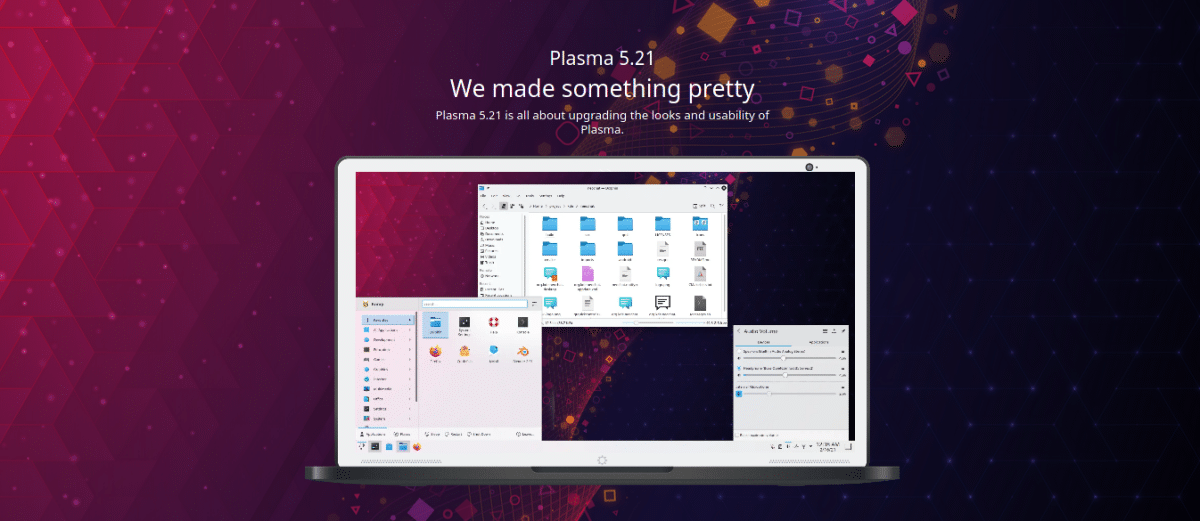
Today February 16 is an important day for KDE users, myself included. The K project has launched plasma 5.21, the latest major update to your graphical environment. It is a first version or zero point, which means that it comes with many new features, but we can also expect it to introduce bugs that will have to be corrected in the five point updates that are scheduled for the next few months. The first (5.21.1) will arrive as early as next week.
One of the most outstanding novelties of those that arrive with Plasma 5.21 can be clearly seen in the header capture, which is in turn a capture of the official release note: the application launcher, also known as Kickoff, has changed, now being easier to access the applications and find them if we have to search for them. Below you have a list of the most outstanding news that have arrived together with the latest version of the KDE graphical environment.
Plasma 5.21 Highlights
All the changes mentioned below were already available in the beta that launched three weeks ago, but KDE has mentioned them again:
- New application launcher. Now it is faster to find and access applications. Also, it supports more languages. It is important to mention that, if we don't like it, the previous version is available at store.kde.org.
- Improvements in the theme of applications. The default theme has changed the color scheme and everything is more consistent.
- New Breeze Twilight, something reminiscent of the mixed theme that Ubuntu already includes: dark theme for the environment, but applications in their light version.
- Plasma SystemMonitor replaces KSysGuard.
- KWin works best on Wayland.
- New settings page for Plasma firewall in System Preferences.
- System Preferences has improved the image of many of its pages.
- Improvements in many Applets, such as the music player or that we can now manage the audio input / output from the sound applet that is in the system tray.
- Complete list of changes to this link.
KDE has officially launched Plasma 5.21, but this means that its code is already accessible. It's coming to KDE neon in the next few hours, and then to other distributions. Those of us who are using the KDE Backports repository, which Kubuntu users tend to do, will not see anything from Plasma 5.21 until April, when Kubuntu 21.04 Hirsute Hippo is released. Those of us who will probably see it before will be those who have Plasma installed manually in a Rolling Release distribution. In any case, Plasma 5.21 is already official.
KDE has surpassed almost all the desktops, not only Linux in its aesthetics and its functionality, but many important questions remain half finished: Baloo works when it wants and badly; Akonadi, we all still do not know what it is for, because you are going to do a search in Kmail to find text in emails and it will find what you want, even messages that DO NOT contain the text you have searched for; we still do not have predictive text, when mobile phones have had it since the last century; Wayland is unusable in real life, and the project has been in development for about 15 years, anyway ... But hey, the appearance is getting more beautiful and professional ... I'm not saying that having a pleasant environment does not improve the experience of user, but milk, that there are deficiencies that have not been fixed for 10 years!
The KDE team has to seriously consider prioritizing what is important and putting off what is secondary, because if not, "the year of the Linux desktop" is not going to arrive even in the XNUMXnd century.